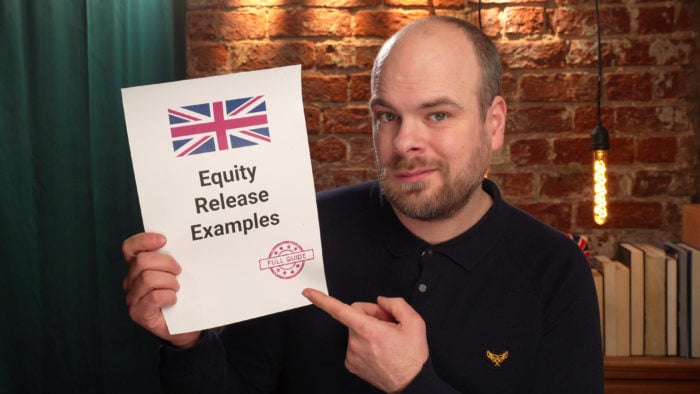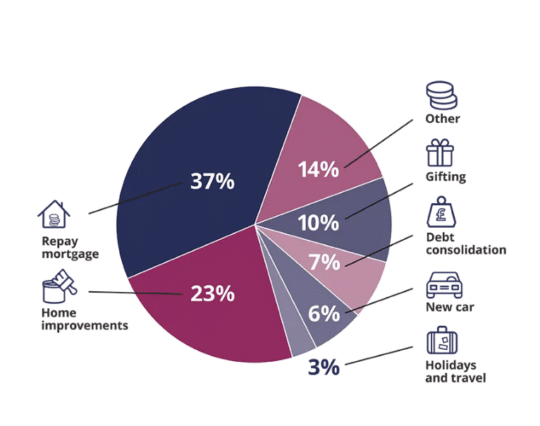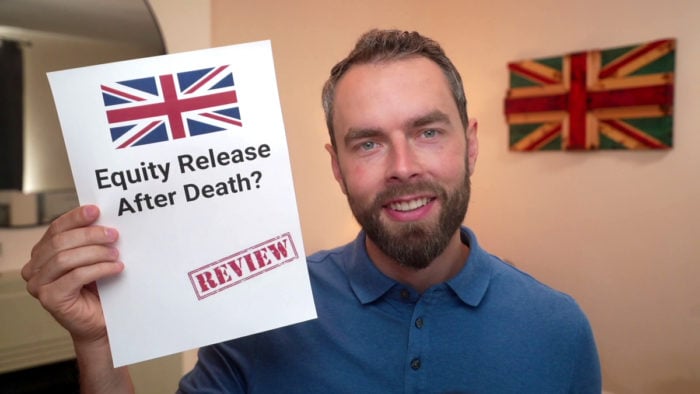Equity Release Examples
Our preferred equity release adviser is Age Partnership. For free and impartial money advice you can visit MoneyHelper.

Our preferred equity release adviser is Age Partnership. For free and impartial money advice you can visit MoneyHelper.
Are you keen to understand more about equity release plans? This 2023 guide is just for you. Here, we explore different types of equity release schemes, helping you to make a wise choice. We know that equity release might seem confusing, but we’re here to clear the fog.
Every month, over 7,000 people visit our website to get clear guidance on equity release. You can trust us to help you understand:
- What are equity release schemes?
- How to get a realistic quote.
- The role of the Equity Release Council.
- How much money you can get with equity release.
- Possible catches with equity release.
We understand your worries and needs, which is why we also share real examples of equity release. These examples will give you a good idea of how things work. And remember, you’re not alone in this journey. We’re with you every step of the way.
Let’s dive in and learn more about equity release together.
How does it work?
To qualify for an equity release scheme, the youngest homeowner must meet the minimum age requirement and they must be releasing equity from their main residential home with a minimum value, usually around £75,000. They should have already paid off their mortgage completely, but on some occasions, a small existing mortgage may be allowed as long as the homeowners intend to pay it off with the money they receive from the equity release scheme.
In general, the scheme will provide some of the homeowner’s home equity as a cash lump sum or drawdown facility. As this is actually a type of borrowing, all the money is tax-free. The homeowner will not need to pay this money back until they sell their home and they continue to live in the property as normal. Most homeowners with an equity release scheme will sell their home and pay the money back in one of two situations, namely:
- From their estate after death
- When they move into long-term care
What are the schemes?
Equity release schemes are methods of borrowing, exclusively for senior homeowners between the age of 55 and 65. They allow the individual or joint homeowners to access some of their home equity as a lump sum or drawdown, which doesn’t have to be paid back through monthly repayments.
There are three main types of equity release schemes in the UK. These are:
- Lifetime mortgage
- Enhanced lifetime mortgage
- Home reversion plan
We provide equity release examples of these schemes later.
How equity release could help
More than 2 million people have used Age Partnership to release equity since 2004.
How your money is up to you, but here’s what their customers do…
Find out how much equity you could release by clicking the button below.
In partnership with Age Partnership.
How much do you get?
An equity release product will not allow you to take all of your home equity out as a lump sum or drawdown. There are reasons why you cannot access all of the value of your home.
The first is that the lender must safeguard against the possibility that your home will decrease in value. If your property was to drop in value then the lender would not recover what they lent to you in the end, especially when the negative equity guarantee stops the total debt from exceeding the value of your property when sold.
Another reason is that the equity release plan provider is aiming to make a profit. If they allow you to take too much of your equity out then they restrict the amount of profit they can make when the negative equity guarantee is agreed upon.
» TAKE ACTION NOW: Find out how much equity you could release
What can I use it for?
Equity release is predominantly used by seniors to make retirement more comfortable. It could be used to pay for everyday expenses over a long period, fund at-home care services, or even be used to pay for memorable experiences, such as round-the-world cruises and trips. Sometimes equity release is used for home renovations, especially to make a property more accessible and safer in older age, such as installing stairlifts or new seated showers etc.
In other cases, the homeowners gift some of the money to family members to help them make their own property purchases or start a business. Be aware, any financial gifts over a set amount could be subject to inheritance tax if the (grand)parent dies within seven years.
Join thousands of others who release equity
Age Partnership have helped over 2 million people release equity from their home.

Mrs Wareham
“I am more than pleased to have taken out Equity Release with Age Partnership.”
Reviews shown are for Age Partnership. Search powered by Age Partnership.
Some examples
To understand how the three types of equity release plans work in the UK, read our examples here:
Lifetime mortgage
Lifetime mortgages are the most common method of equity release in the UK for seniors. They allow you to access a percentage of your property value as a lump sum or a drawdown facility. A fixed interest rate is applied to this amount but isn’t payable. Instead, the interest debt is added to the principal debt and continues to roll up making your debt bigger. Some people prefer to make voluntary interest payments to keep their debt lower.
An example of a lifetime mortgage would be releasing equity of 50% of your property value, which would be £65,000 on a £130,000 home. If a standard interest rate is applied to this amount – say 6.4% – and you have the lifetime mortgage for 12 years (you then move into aged care and need to sell), your total debt would equal just below £137,000. Of course, the debt would be less if you decided to make some voluntary interest payments over those 12 years.
If the property held its value at £130,000 and sold for this much, all of the money raised from the sale would be owed to the lifetime mortgage provider. But what happens to the remaining £7,000 of debt?
Well, the good news is that lifetime mortgage lenders that are legitimate and members of the Equity Release Council must commit to the no negative equity guarantee. This guarantee means you only ever owe the money owed from the sale of the property and will not need to pay the shortfall on the debt from your own savings or from the rest of your estate if you have passed away. This provides peace of mind and leaves more money for your estate’s beneficiaries.
Enhanced lifetime mortgage
An enhanced lifetime mortgage works in the exact same way as illustrated above with one key difference. Within the application process, the applicant(s) fill in a health and lifestyle questionnaire and can supply medical records. This can be beneficial if you have poor health with a lower life expectancy. People with lower life expectancy are then allowed to access more of their home equity as a lump sum or possibly a drawdown facility.
For example, if under a general lifetime mortgage you could access 50% of your home equity, you may be able to access 70% with an enhanced lifetime mortgage. The lender allows this because if you are expected to pass away sooner, there is less chance that your property would decrease in value over time, and therefore providing more of your equity is less of a risk to them.
Home reversion scheme
Home reversion schemes are less common than the two described above, but they are still used by some UK seniors.
Let’s imagine Jeff is 60 and has a home worth £150,000. The home reversion plan will offer Jeff to release some of his equity but will ask for a bigger percentage of the property value when it is eventually sold. So, Jeff may release 33% of his home’s value (£50,000) but have to give up 66% of the sale proceeds when it is eventually sold. This could be £100,000 or more if the property value rises. This is why no interest is usually applied.
Does it affect state benefits?
Releasing equity will instantly increase the amount of money you have in the bank, which could then affect your eligibility to receive some means-tested benefits. For example, you cannot lose your state pension, but you could lose some of your pension credits that top up your state pension, which could then mean losing council tax reductions.
If you have more than £16,000 saved, you’ll also be ineligible for Universal Credit.
Is there a better alternative?
One alternative option instead of using an equity release plan is to downsize. It could be financially more advantageous to simply sell your home and move into a smaller less valuable home, freeing up some money this way. And doing so would ensure your estate beneficiaries receive 100% of a property when you die.
However, moving can be a stressful process that you might not want to deal with in later life.
Want more examples and discussions?
For more equity release examples and discussions, look no further than MoneyNerd. Our team has written lots of new guides and blogs all about releasing equity so you have the tools to assist your decision.


